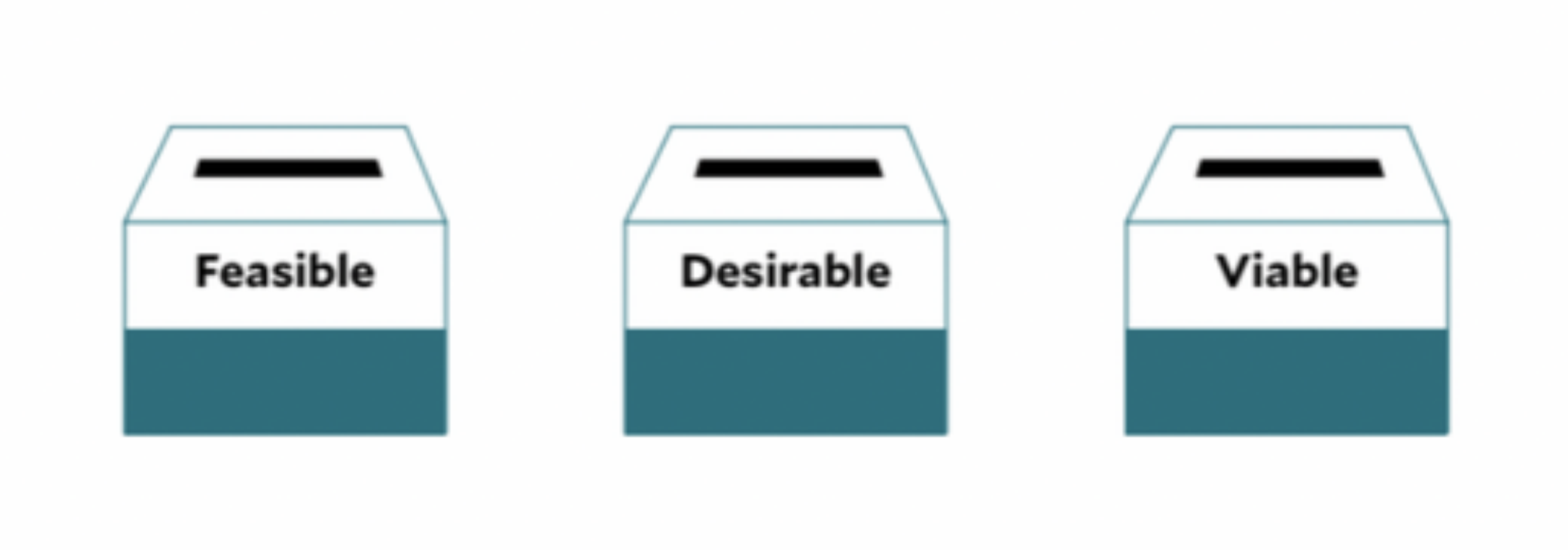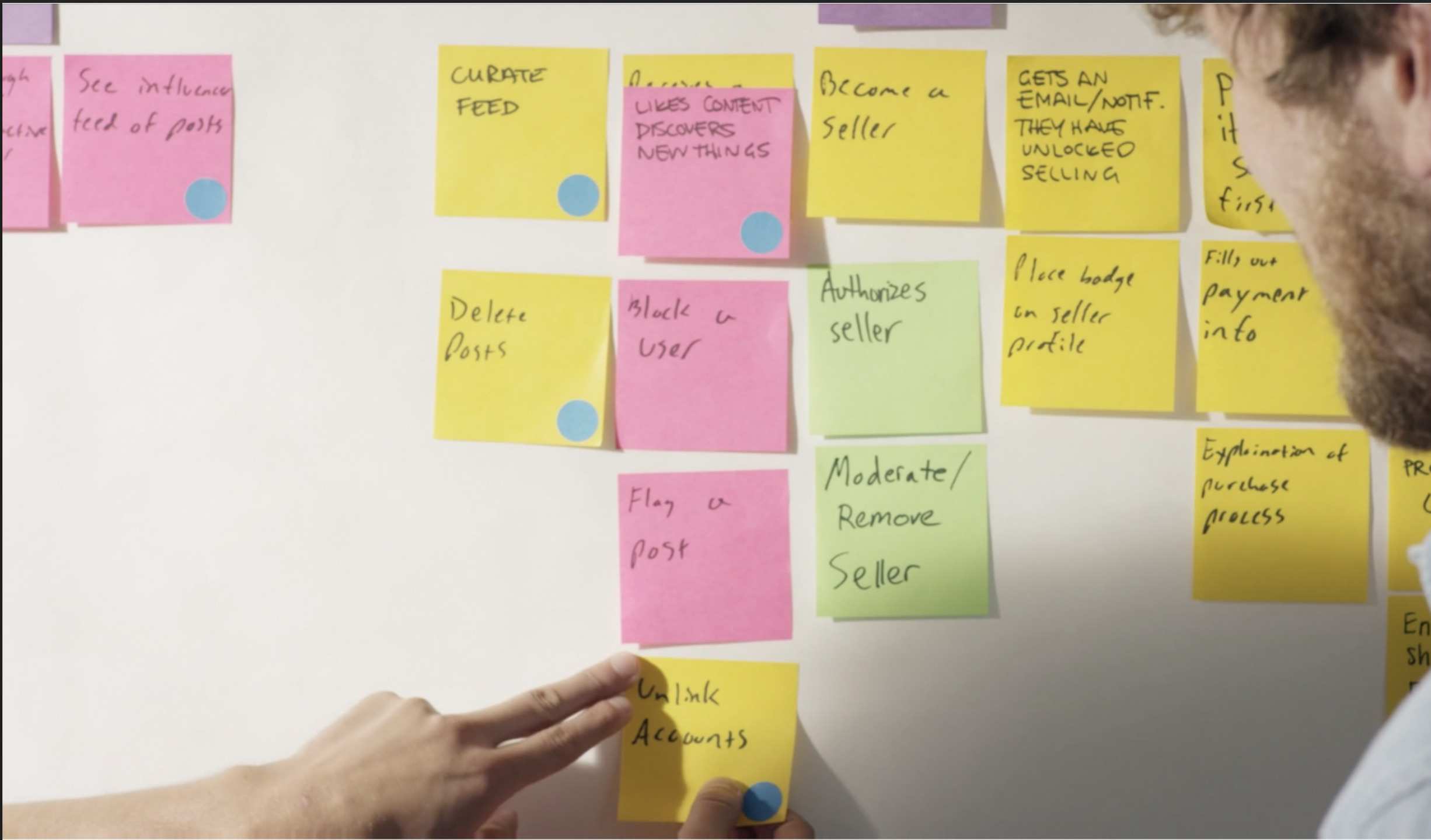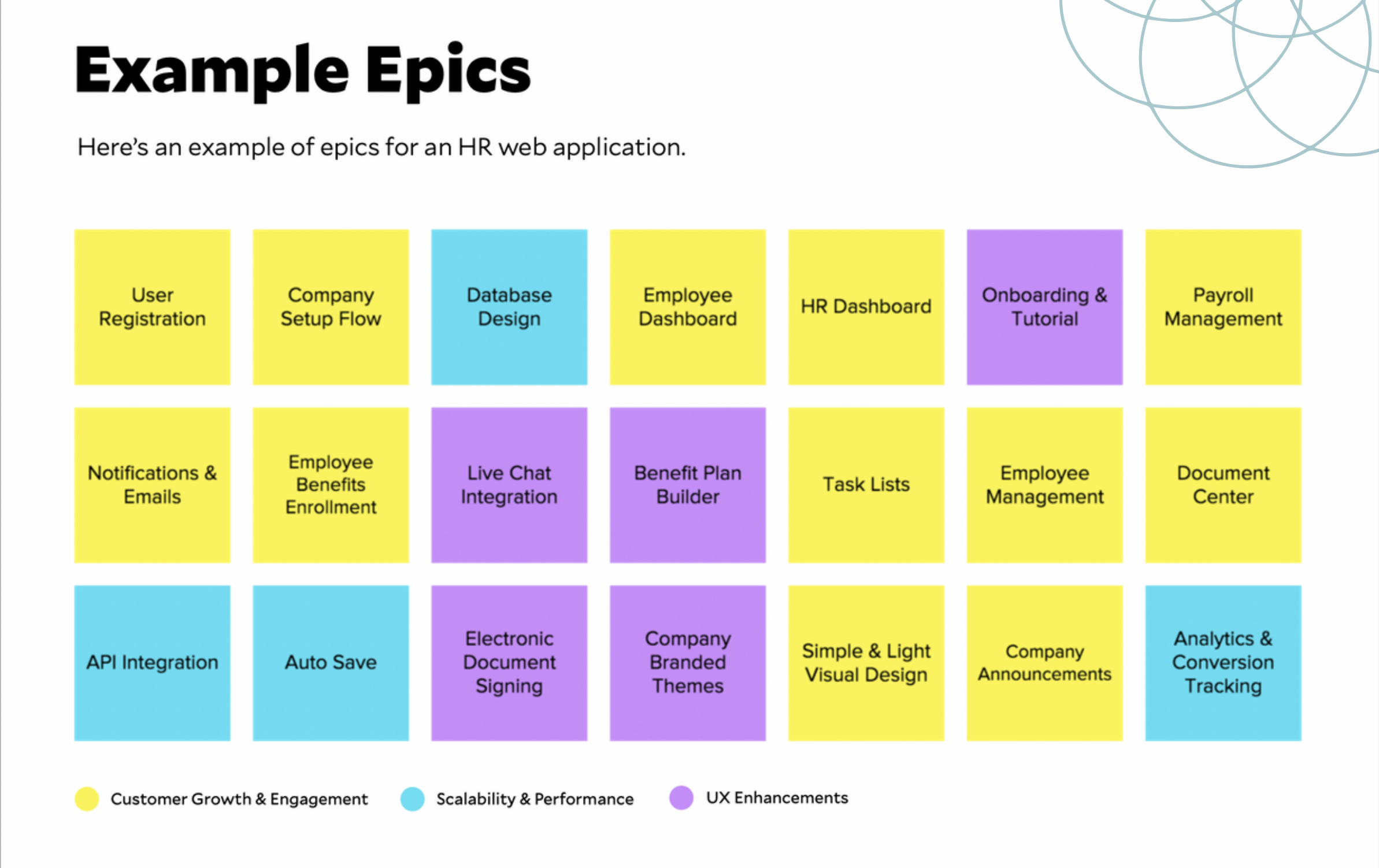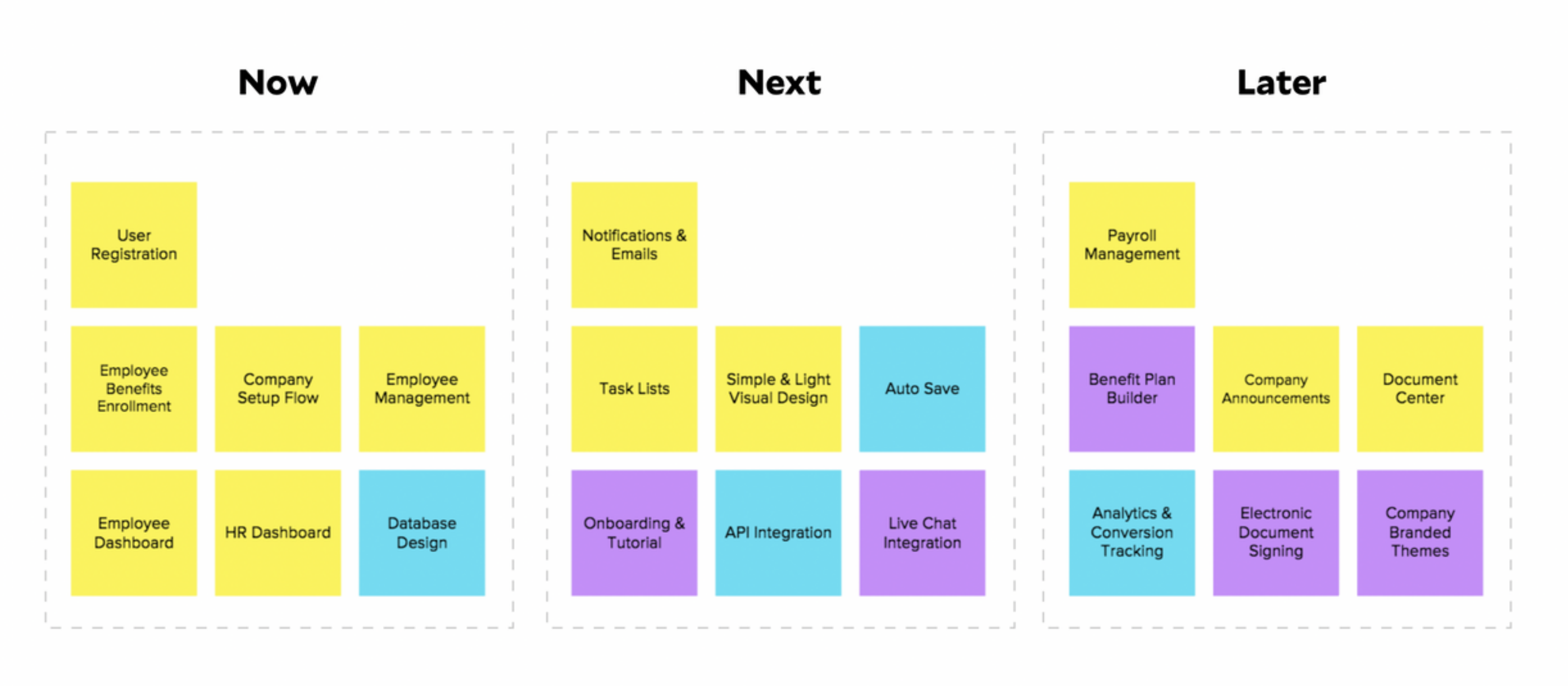
If you're building an IoT product and want an insider look at how to moveforward successfully, you're in the right place.
IoT development is complex - there are hardware dependencies, security concerns, and user needs to juggle—but with the right roadmap in place, your product has a clear path to success.
In this guide, you’ll learn:
We know that embarking on this journey can be both thrilling and a tad overwhelming - the possibilities are vast, the technology is cutting-edge, and the journey ahead might seem like a labyrinth of the unknown. But fear not - we’ve crafted this guide specifically for adventurers like you!
Consider this guide as your practical companion on the exciting journey ahead - a resource designed to help you organize your thoughts, understand complexities, and guide you toward success. In it, we'll explore the importance of a well-crafted product roadmap and provide all the step-by-step guidance you'll need to successfully create a roadmap for your project.

At its core, product roadmapping is the art and science of charting a course for your software development journey. It's a strategic planning method that aligns your team and stakeholders to achieve a common vision. A well-crafted roadmap serves as a visual guide, outlining the short-term and long-term goals, milestones, and features necessary for the successful delivery of your IoT software.
Think of your product roadmap as a detailed itinerary for your project that breaks down each section into manageable pieces, which are then prioritized based on strategic objectives. Your roadmap will consist of a visual timeline that not only highlights major milestones but also delineates specific features, tasks, and deliverables. This organized approach ensures that your team shares a common understanding of priorities, allowing for efficient resource allocation and fostering collaboration.
The beauty of a product roadmap lies in its adaptability, offering flexibility to accommodate changes while maintaining a clear path toward your software development goals. This guide is designed to demystify the process, making it accessible and, dare we say, a little fun!
A product roadmap describes your product’s expected evolution. It plots your product’s journey over the course of production and gives your team a united vision to work from.
Your roadmap should strike the appropriate balance between simplicity and thoroughness. It should be flexible, able to handle iterations as they’re needed.
Most importantly, your roadmap should answer two crucial questions:
Roadmaps should be created primarily by your product manager, who is responsible for translating a product’s vision into actionable steps for the team. But it’s crucial that everyone on your team—from design to development to marketing to sales—has input in its creation. All of the product’s stakeholders need to be aligned on this valuable document in order to stay on the right
Why is product roadmapping so pivotal in the realm of app development? Simply put, it brings order to chaos. In an industry where innovation and rapid iteration are the norm, a roadmap acts as a stabilizing force. It helps you prioritize tasks, allocate resources efficiently, and adapt to evolving market trends. A well-defined roadmap not only enhances collaboration but also fosters a sense of purpose, empowering teams to make informed decisions that align with the overarching strategy.

If you’re going to create a standout product roadmap, it’s essential that you and your team know the lingo.
Is it the right time to create a product roadmap? If you find yourself in either of the following situations, the answer is “yes”:
Starting the product roadmapping process before you’re ready can cause more harm than good, so don’t dive in before doing the necessary prework. These three problems indicate that you need to conduct further research and user testing before creating a roadmap:

When it comes to IoT software development, the stakes are even higher. The interconnected nature of IoT devices demands meticulous planning to ensure seamless integration, security, and scalability. A thoughtfully crafted roadmap becomes the linchpin, steering your team through the intricacies of hardware-software coordination, data management, and user experience design unique to the IoT ecosystem.
As we embark on this journey through the landscape of IoT product roadmapping, prepare to gain valuable insights into each step of the process. From defining your product vision to adapting to emerging technologies, this guide is your comprehensive toolkit for success in the dynamic and exciting world of IoT software development.
Get ready to chart your course, embrace innovation, and navigate the future with confidence. Let's embark on the roadmapping journey together!

Roadmapping an IoT product involves several unique challenges that don’t typically apply to standard mobile or web apps. Here are some critical areas to address early in the planning process:
Hardware and software dependencies.
Your app must align with the capabilities and constraints of the hardware it interacts with—this includes firmware functionality, sensor behavior, and communication protocols. Make sure your roadmap accounts for hardware readiness, testing cycles, and potential limitations.
Connectivity challenges
IoT products often operate in environments with unreliable or intermittent connectivity. Plan for how the app will behave when the device is offline, how it will sync data once reconnected, and whether edge processing is needed to maintain functionality without constant access to the cloud.
Device provisioning and user authentication. Determine how users will set up and connect their devices. Will pairing be handled via Bluetooth, Wi-Fi, QR codes, or user accounts? These workflows should be clearly defined and tested early, as they often set the tone for the entire user experience.
Security and firmware update planning
Security must be baked in from day one. Your roadmap should include strategies for encrypted data transmission, secure API access, and user authentication. It should also account for how firmware updates will be delivered to devices in the field—whether manually, automatically, or over-the-air (OTA).
Data collection and analytics
Decide what types of data your device and app will collect, how frequently that data is transmitted, and how it will be stored, processed, and visualized. This includes both user-facing insights and backend analytics for product performance and usage trends.

Before you can start mapping out how you'll bring your product to life, you need to know exactly what your building and why. Here are some exercises you can conduct to help nail that down.
Step 1: Establish the problem statement.
Building an app is all about solving a user problem, so establishing a clear idea of exactly what problem your app will be solving for your ideal user is an important step in creating a great app. A good problem statement will helps you fully understand your goal and creates a clear-cut objective to work towards. Here's a step by step guide to writing a problem statement for software products.
Step 2: Define user personas.
Defining user personas is key. Collaborate with the product manager, designers, and developers to describe your target users and understand whether your solution meets their actual needs. Here's a step by step guide to understanding your user, including how to create user personas, empathy maps and more.
Step 3: Create user journey maps.
User Journey Maps are powerful tools that document a user's experience with your app from start to finish, including how they will be introduced to it and when and why they will use it - allowing you to visualize your product through your user’s eyes, uncovering their goals, emotions, and friction points every step of the way. Here's a step by step guide to user journey mapping.
Step 4: Narrow in and generate solutions.
The ideation stage is one of the most exciting parts of the app development process. This is when you'll begin to brainstorm and shap what your app will actually look like and do, turning all of your insights into features, and ideas into real solutions. Here's our guide to ideation for app development projects - including valuable exercises that will help move forward.
Step 5: Create epics.
Epics are major work units (e.g., an onboarding flow) composed of multiple user stories. Make sure all user needs are covered by an epic. At Yeti, we write epics on sticky notes to rearrange and group them easily. You can also color-code them by theme or goal (e.g., customer growth, UX).

Step 6: Prioritize epics.
With your whole team, prioritize the epics using feasibility, desirability, and viability. Developers and designers should explore how to build features that truly meet user needs.

Step 7: Map it.
Now, bring it all together. On a whiteboard, draw three boxes for general timeframes such as “Now,” “Next,” and “Later”—or get specific: “Next 2 Weeks,” “Within 3 Months,” “In 1 Year.”

This epic-level roadmap provides a big-picture overview. If going long-term, keep it flexible. For more detailed planning, use agile roadmaps for sprints or dependency diagrams to sequence tasks and identify low-hanging fruit vs. complex features.
Product roadmapping has its pitfalls. If you can reject these common misconceptions, you'll set your product on a strong path forward.
1. “Once is enough.”
Many product managers focus heavily on getting a product to market, often neglecting continued development. While launch plans are important, they’re just the beginning. Technology, business needs, and budgets change frequently.
If you're building complex features or new tech, expect to revise your roadmap even before MVP. And once you’ve launched, continue iterating. Regular updates to your roadmap are essential for long-term product success.
2. “You can’t be too agile.”
Agility is vital, but without a high-level plan, it becomes chaos. Being too agile—focused only on short-term sprints—can result in scattered work that doesn’t contribute to a strategic goal.
We’ve seen teams waste time on isolated sprints that might yield interesting outcomes but lack direction. Agile works best when tied to a cohesive roadmap.
3. “The roadmap is the starting point.”
There’s often pressure to get to launch quickly, but skipping prework is a mistake. You need to understand user pain points, explore alternate solutions, and define what makes your product unique before you roadmap.
This myth often comes from stakeholders who don’t want to challenge their assumptions. Skipping discovery and user research might feel like speeding things up—but it usually leads to wasted time and money.
To build something that works, start with a discovery workshop and design sprints—then create the roadmap.

Now that you’re aware of the most common mistakes, it’s time to share the secret sauce. Use these 10 tips to help build a world-class roadmap for your technology product.
1. Focus on epics.
It’s tempting to dig deep into user stories early on, but getting too granular can distract from broader goals. Since user feedback may shift stories over time, avoid planning them beyond a 3-month horizon.
2. Be ready to adapt.
Flexibility is key. If a competitor releases something similar or if user needs shift, your roadmap must be ready to pivot. Stay alert and willing to adjust your plan.
3. Involve all stakeholders for departmental alignment.
Misalignment causes friction and delays. Don’t wait until you’ve set plans to get stakeholder buy-in. Include diverse voices from the start in strategy and discovery sessions to avoid costly rework later.
4. Democratize decision-making.
When multiple stakeholders are involved, decision-making can stall. Speed things up with weighted voting exercises. Assign points for desirability, feasibility, and viability—then rank your epics based on the totals.
5. Color-code everything.
Make roadmapping hands-on. Before jumping into digital tools, use sticky notes and color-coded markers. It helps creativity flow and allows the team to easily rearrange priorities in real-time.
6. Give the MVP the attention it deserves.
Your MVP should be your central focus early on. Don’t overextend to future iterations until you’ve nailed this phase. Focus on one sprint at a time—the MVP sets the tone for everything that follows.
7. Test on the fly.
A roadmap is great for planning, but don’t assume your initial ideas are perfect. Run user tests as you go. Let feedback guide how your roadmap evolves—don’t just test at the beginning.
8. Let users dictate epics.
Always ground your roadmap in real user needs. Skip assumptions. Conduct design sprints and market research before you roadmap. Let actual users’ voices determine what gets prioritized.
9. Balance viability with vision.
Having a bold vision is important, but it's not everything. Before building the full product, prototype it. This helps you test the core concept, validate assumptions, and set realistic expectations. Your final roadmap should reflect something useful, buildable, and competitive.
10. Don’t be afraid to outsource.
Internal teams can become echo chambers. A product development agency can offer fresh perspectives and practical guidance. External consultants can help you test ideas, refine processes, use the right tools, and keep evolving with the market.

Developing an IoT app is a collaborative process—and selecting the right development partner is crucial to success. A good partner won’t just execute your roadmap; they’ll help shape it. Here’s what to look for:
Proven experience with IoT technologies.
When evaluating potential development partners, look for teams with hands-on experience building IoT apps. Ask for case studies that highlight their work with device connectivity, real-time data syncing, hardware integration, and platform-specific challenges. A strong partner should be able to clearly explain their role in past IoT projects—and the impact those solutions had.
Robust security expertise.
IoT apps must safeguard sensitive data as it moves between devices, apps, and the cloud. Look for a development team that understands how to securely store and transmit data, protect APIs from unauthorized access, and implement authentication protocols. They should also be familiar with industry-specific compliance standards—such as HIPAA for healthcare, SOC 2 for enterprise applications, or GDPR for apps used in the EU—and know how to build solutions that meet those regulatory requirements.
Cross-platform development expertise.
Your IoT app may need to function seamlessly across mobile platforms (iOS and Android) and web-based dashboards for administrators or users. Choose a team that has proven experience building apps that work reliably across all required platforms, and can ensure a consistent user experience, regardless of device or operating system.
Strategic product guidance—not just coding.
A great development partner should do more than write code—they should help shape the product. Look for a team that’s willing to challenge assumptions, offer creative solutions, and guide you toward better decisions based on user needs, technical feasibility, and business goals. Their input during the roadmapping phase can significantly improve the quality and success of your final product.
If you'd like to learn more, be sure to bookmark our extensive library of IoT software development resources, articles and case studies.

 Navigating Technical Debt in App Development: A Comprehensive Guide
Navigating Technical Debt in App Development: A Comprehensive GuideStruggling with Tech Debt? If you're dealing with frequent bugs, performance problems, or a generally difficult development process, tech debt is the likely culprit. Our comprehensive guide offers all the tools necessary to identify, manage, and eliminate this disruptive issue. Boost your software's performance and streamline development with our free resource today.

 Unlocking Connectivity: The Ultimate Guide to IoT Software Development
Unlocking Connectivity: The Ultimate Guide to IoT Software DevelopmentTo help you build an IoT app that users love, we've assembled this comprehensive guide to IoT software development - and expertly curated resource that will guide you through each stage of the app development process in easily digestible steps.

 Product Roadmapping for Bluetooth App Development
Product Roadmapping for Bluetooth App DevelopmentProduct roadmaps are strategic planning tools that allow you to align your team with a common vision. While commonly used in many software products, roadmaps are particularly important in the interconnected realm of Bluetooth technology, where meticulous planning is necessary for ensuring seamless integration, security and scalability. This comprehensive, free guide will provide you with everything you'll need to begin your product roadmap.